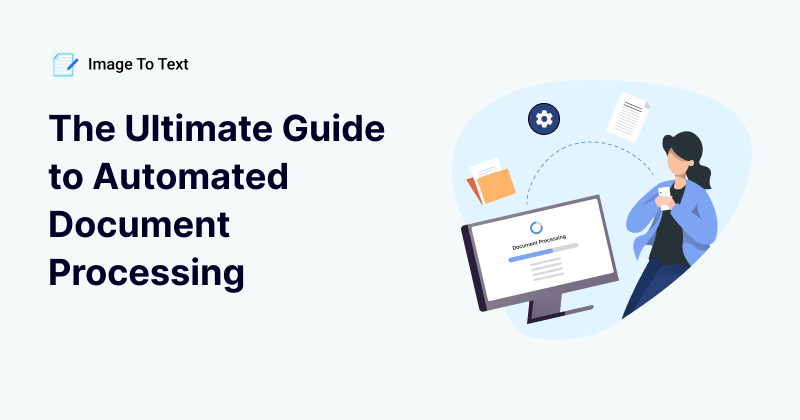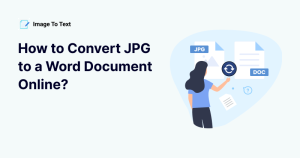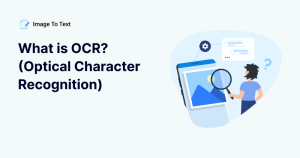The Ultimate Guide to Automated Document Processing
In any type of business, documents are almost central to the functioning of their processes. All the classified information about the businesses is stored in documents of various types. On the other hand, even the simplest emails and images are also an important piece of information for them.
However, as the business expands, so does their database. In such a case, it becomes increasingly difficult to keep documents managed and organized. This poses a challenge to document processing. When the data exceeds a certain amount, it becomes very difficult to process all of it manually.
So, in this article, we will discuss an automated alternative. With the latest technologies, we have to adapt to a method of working that minimizes manual labor and maximizes automation. So, let’s go in-depth about this.
What Does it Mean by Document Processing?
Document processing is a broad term that can encompass many things. However, in very general terms, it is the procedure through which the information within a document is retrieved, stored, or shared. For example, editing the information within a document can be called document processing.
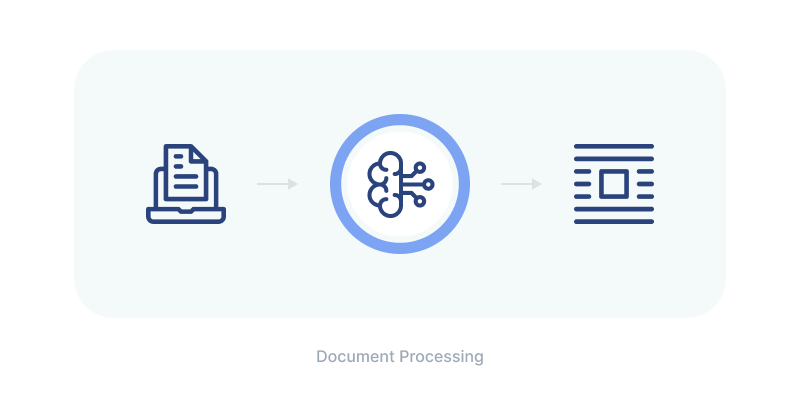
Similarly, data entry from different files into a single document can also come under document processing. This process uses information from various sources and gives us appropriate results. Sharing information in the form of emails also constitutes document processing.
All these tasks are conventionally done manually. However, with the advent of technological transformations, they can now be given to the machines to handle. Artificial intelligence is the main technology in this regard.
Introduction to Automated Document Processing
According to Inland Technology, 90% of staff productivity loss is due to document problems. This is quite understandable because the outdated methods for document management are way too slow, repetitive, and exhausting.
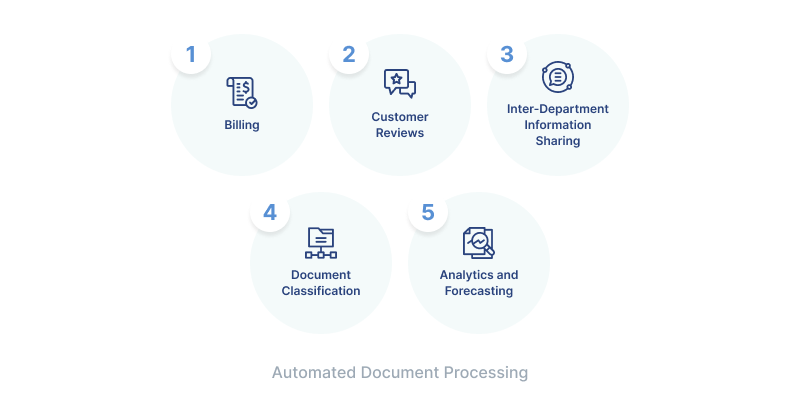
This is why automation is necessary. Here are some key areas or processes where you can utilize automated document processing. These will help you understand what the term really means.
1. Billing
In places such as grocery stores, the database is largely composed of bills and receipts for various types of orders. Workers may have to work with hundreds or even thousands of orders by the end of every day. However, using Optical Character Recognition, information from invoices can be extracted easily.
Afterward, AI algorithms can analyze this extracted information and perform whatever the user wants. For instance, you can validate the collected data or analyze it for a sales report.
2. Customer Reviews
No business is perfect and is bound to get customer feedback. A trusted online source reveals that reviews are more important to buyers than discounts or free shipping. In other words, the sheer amount of these reviews sometimes makes it impossible to analyze manually.
Instead, you can gather all the emails, texts, or documents related to customer complaints and input them into an AI platform for analysis. Using Sentiment Analysis and Natural Language Processing, AI tools are now able to understand exactly what the customers want or are suggesting. This saves an incredible amount of time.
3. Inter-Department Information Sharing
In an established workplace, there are different departments that have to work on various aspects of a single document. For example, when a customer completes an order, the finance department counts it as a sale, the IT team analyzes customer satisfaction, the audit team deals with legal stuff, and much more.
With AI, you can create systems that send the document to all these departments automatically. This is much more efficient in contrast to departments manually communicating and sending files back and forth.
4. Document Classification
With the latest AI models, documents can also be classified according to their content. For example, you can automatically organize blogs with different genres into different folders. Similarly, the HR department can use this feature to classify worker reports based on their post, department, salary, etc.
5. Analytics and Forecasting
Automated document classification can also help workers avoid manual analysis of content. For example, if a document has weekly and monthly sales, AI software can review it and give future trends. It can also give information about the weaknesses of your progress based on which products had low sales rates.
In this way, you can directly get results without having to perform a lengthy analysis. You can simply match the report and results to see if the tool used the data accurately. With the latest AI models, even this might not be necessary.
The Role of OCR in Document Processing
Automated document processing is incomplete without OCR. OCR (Optical Character Recognition) is the technology that helps AI, or any software for that matter, access the data within documents.
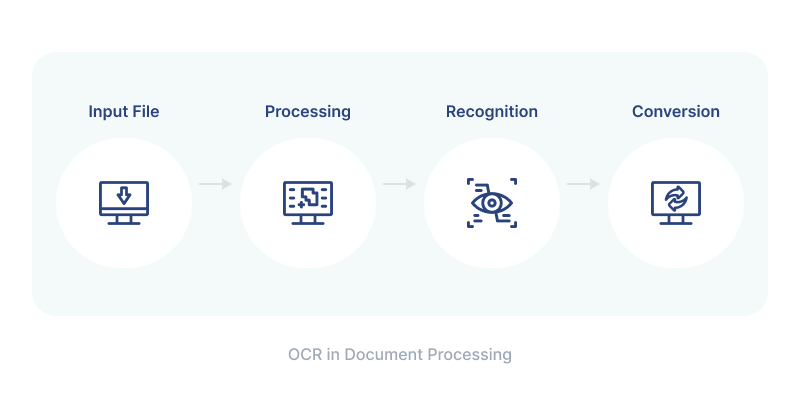
By itself, AI is only able to analyze content that is in the form of machine-readable text. By machine-readable text, we mean text that can be selected, copied, and edited. This includes the text you type yourself or text that is present in an editable document.
But what about images, PDFs, and paper-based documents? For these, AI requires OCR’s assistance. This technology retrieves the text within unmodifiable document types and converts them into machine-readable text.
For a better understanding, try using an online OCR tool. We will give a short demonstration here as well.
How does OCR Work?
In order to use an OCR tool, follow these steps:
- Go to an online image to text converter.
- Upload an image that has text in it.
- Click on the ‘Convert’ button.
- Wait for the processing.
- Collect the extracted results shown in the output section.
You might wonder how this tool did what it did. Here is a brief and simplified explanation of its functioning.
- Pre-Processing: When you upload the image, the tool receives it and makes it ready for conversion. For this, the tool may increase the contrast of the image or make it black-and-white so that the text characters are easily recognizable.
- Character Matching: The database of an OCR tool consists of all the text characters, numbers, and symbols. It matches every character present in the image with the characters in their database. Upon this matching, it chooses the characters that closely match and sends them further.
- Result Generation: By analyzing the spaces and some other factors, the tool shows the results to the users in the form of editable and copyable text. Advanced tools may integrate NLP algorithms in this step to improve the accuracy of the results.
In this way, OCR helps Artificial Intelligence reach or access the content within unusual documents. With this, you can even convert your physical documents into soft copies and analyze them automatically. Not just that, OCR can also work with hand-written documents. So, no matter how old-fashioned your business’s framework might be, it’s never too late to go modern. This feature is also useful for students who want to automate some of their workload.
How to Choose a Tool for Your Business?
As you may be aware, there is a plethora of document automation tools and software available these days. So, in such a highly competitive market, how do you choose a tool that is perfect for your business? Well, here are some pointers to keep in mind when finding a tool.
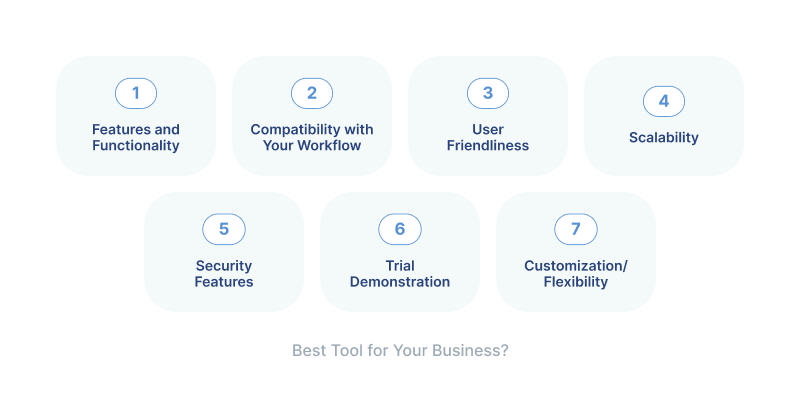
1. Features and Functionality
The first and foremost is the credibility of the tool. Make sure the tool has, at least, the basic features and functions. You can refer to an IT expert for this matter, or better, research yourself. For example, see if the tool has an accurate OCR model and uses the latest machine learning algorithms.
You can also check the functionality of a tool by looking at customer reviews or feedback. Based on data collected using these research pointers, you can shortlist a number of tools.
2. Compatibility with Your Workflow
Next, see if the tool would be a good fit for your current systems. For example, if you are using Microsoft Office for documentation, then it might be a good idea to choose Microsoft’s data sorting tools as well.
Similarly, if you have a cloud-based documentation system such as that of Google (Docs, Sheets, Meet, etc.), then go for Google’s automation tools.
You can also make this decision based on which software’s functionality would be compatible with the skill levels of your workers.
3. User-Friendliness
Another important thing to look for when choosing an automation utility is user-friendliness. Not all tools are easy to use and have dramatic learning curves. So, you should make sure that, along with features, the tool is also easily understandable and that integrating it into your work isn’t a chore.
4. Scalability
Not all tools are designed to manage extremely huge amounts of data and information. So, if you have a large-scale company, you should make sure to invest in a top-notch tool that can handle your workload.
Similarly, if your work is not that document-intensive or you operate on a small scale, it would be a bad idea to get top-of-the-line software. You can also make do with relatively smaller tools. In short, gauge the return on investment before choosing a tool.
5. Security Features
You must be aware of the importance of protecting sensitive data from threats such as breaches or hacks. Therefore, when selecting a tool for your company, make sure it has enough security features to protect all your data from such threats.
On an additional note, make sure the tool is in accordance with legal requirements as well. For example, in Europe, you can match the tool’s terms and conditions with the General Data Protection Regulation (GDPR).
6. Trial Demonstration
Some tools also provide free trials to their users. You can use these to see whether they work according to your preferences or not. You can try out different tools in this way. Maybe use them for certain beta periods and make a decision based on that.
7. Customization/Flexibility
We recommend you not go for highly rigid tools that force the users to adjust according to the tool’s nature. Instead, you should find tools that offer a decent amount of flexibility and are customizable according to the nature of your workflows.
Examples of Tools
To make things easier for you, you can go over the following tools. Use these as a head start for your research.
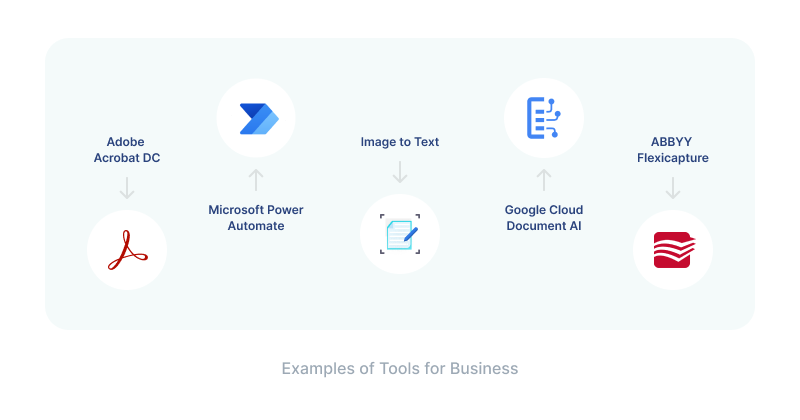
Adobe Acrobat DC
If the primary document in your work is PDF, then Adobe Acrobat is a great choice. It allows users to directly edit PDFs and add elements to them with ease. Similarly, its e-signing feature makes it a great choice for online or hybrid businesses as it minimizes physical interaction. In other words, it is one of the best in the industry for automated PDF processing.
Microsoft Power Automate
As mentioned before, Microsoft Power Automate is a dedicated automation tool that aligns perfectly with Office 365 documents. It can perform various tasks such as approval automation, email automation, data entry, self-operating customer service, and much more.
Google Cloud Document AI
Just like Microsoft, Google also has its own automation platform known as Cloud Document AI. It can make things much easier for you as it can efficiently automate data extraction, perform compliance and risk management, manage content and categorize it, etc. You should consider this tool if your business uses Google’s other tools as well for easy integration.
ABBYY Flexicapture
If you are not worried about smooth integration, you can also use third-party tools such as ABBYY Flexicapture. This tool efficiently captures, organizes, and sends data to their required destinations in a workstream.
Image to Text
Talking about third-party tools, we can’t forget Image to Text. It uses intelligent data recognition to extract data from all types of inaccessible documents. You can use this tool to digitalize your whole data directories and then process it using simple AI.
Why You Should Automate Documentation
Now, let’s move on to the question of Why? Why should you put so much effort into setting up advanced AI models in your workflow? The reasons are quite convincing. They are listed in the following:
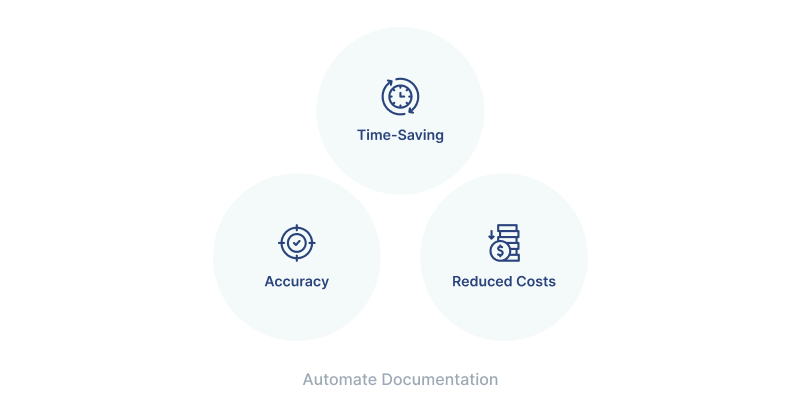
Accuracy
The alternative to automation is manual labor. No matter how many workers you hire, they are bound to make mistakes. This is far from a condescending statement but is rather a fact about human nature. Our error rate is quite high compared to machines.
If you apply automation, error rates will go down, and you will start getting better results. This will improve the overall functioning of your business, and you will be able to work on multiple projects at the same time.
Time-Saving
One of the major proponents of a business’s success is how they manage their time. A very simple example is that if your workers are wasting time, you will never reach your expectations or be able to meet deadlines. But what if when these workers do work, they are not using their full potential? We hope this helps put things into perspective.
With automation, people are able to do much more in much less time. They can multitask efficiently and make full use of the time they are working. If half of a worker’s day is spent doing data entries, they will never be able to perform well.
Reduced Costs
As we said before, relying on a huge workforce is no longer the best way to go about things. If you automate, you can use a small but effective workforce to pave your way to success. A small workforce means less expenditure. Consequently, you can maximize profit and enjoy better results.
Put simply, in the long term, the return on investment is quite high if automation is utilized.
Brief Precaution
Throughout this article, we have praised AI for this magical and miraculous technology. While we don’t deny this, there are some things to keep in consideration when using this technology.
- Make sure your employees don’t become overly dependent on technology. Sure, AI can perform a number of tasks efficiently, but one thing it lacks is creativity, which is necessary for a business to function effectively.
- You have to make sure to keep a balance between technology integration and workforce management. We mean to say that don’t go so overboard that you get forced to fire a large number of reliable people.
- AI is highly accurate in tasks like document sorting and processing, but it isn’t 100% error-free. Therefore, make sure to go over AI-generated results to see if they are totally accurate.
- AI works on the basis of the quality of data given to it as input. If you give it poorly organized information, it will give you poorly curated results. So, make sure there is a decent amount of effort from your side as well.
Keep these in mind, and you are ready to go!
Final Words
In this article, we have tried to cover all the aspects of automated data processing in order to introduce you to this modern necessity. We must realize that in the contemporary age, using automation doesn’t just give you a slight edge over others, but is rather necessary to compete.
Using the information given in this article, you can get into data automation if you haven’t already. Just stay dedicated to the cause and don’t expect immediate results, and you will surely see yourself making your way toward success.

